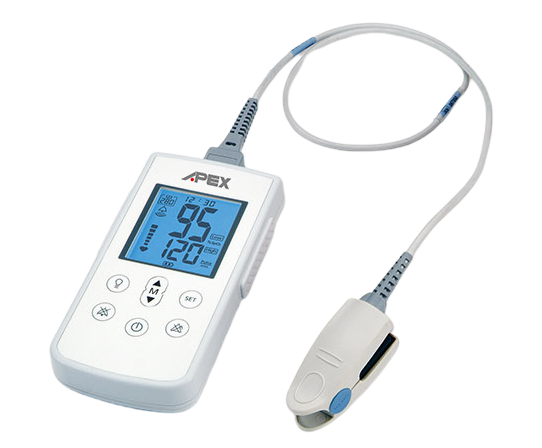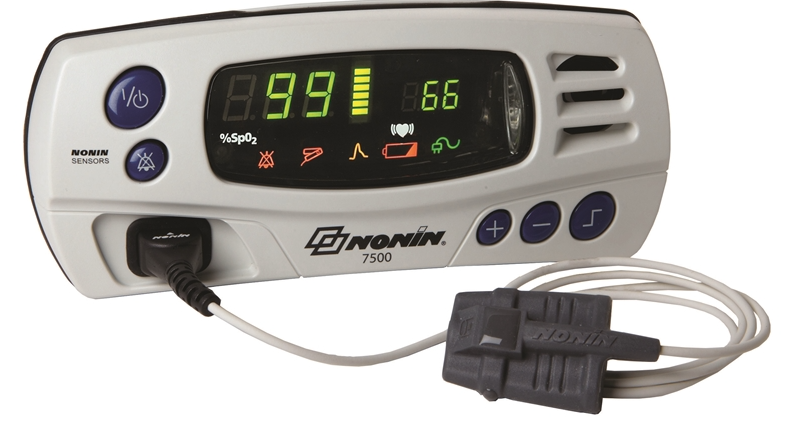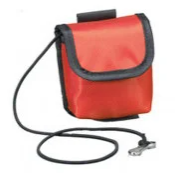Handheld Pulse Oximeters (O2 Sensors)
A Handheld Pulse Oximeter combines the benefits of a tabletop oximeter and a fingertip oximeter to provide a medical-grade and user-friendly diagnostic device. A handheld oximeter uses a range of noninvasive probe sensors to display blood oxygen saturation (SpO2) and pulse rate readings for patient diagnostics and routine checkups. With the ability to source power from the battery or the power docking station, a handheld o2 sensor is ideal for b
Who Can Benefit From a Handheld Pulse Ox?
Individuals managing chronic health conditions may be asked by their doctor to track their blood oxygen levels, especially when receiving respiratory therapy. Obtaining blood oxygen readings is an excellent tool to validate if the therapy protocol is working. The handheld pulse oximeter stores the readings to share with a healthcare provider for evaluation to determine if adjustments are needed.
Monitoring oxygen levels provides peace of mind, whether the person has a chronic disease or has a high-risk condition with respiratory complications. Some of the health conditions that necessitate monitoring blood oxygen levels include the following:
- Asthma
- Bronchiectasis or bronchopulmonary dysplasia
- Heart disease
- Cystic fibrosis
- COPD, including emphysema and chronic bronchitis
- Interstitial lung disease or damaged lung tissue
- Larynx and lung cancer
- Immunocompromised conditions or weakened immune system with COVID-19


Versatility With Home Use and Hospital Use
Keeping pulse rate and blood oxygen saturation (SpO2) monitored is an essential practice in clinics, hospitals, and homes. A great benefit of a handheld oxygen sensor is the large display while still having a compact design. These devices take the best aspects of finger pulse oximeters and tabletop pulse oximeters and combine them into one ideal device. These oximeters have the benefit of being compact and user-friendly enough for home use while being accurate and effective enough for hospital use.
Key Features of a Handheld O2 Sensor
- Compact and Portable Design - They deliver the benefits of tabletop oximeters in a small, compact design that makes on-the-go use easy.
- Expansive Reading Memory - With the ability to record oxygen and heart rate information for future reference, the oximeters provide user convenience.
- Pediatric and Adult Options - Vitality Medical carries a range of oximeters, including pediatric and adult options.
- Wide Range of Probe Sensors - Allows the user to customize the probe sensor type.
- Fast and Easy Readings - These oximeters provide accurate, medical-grade readings within a matter of seconds.
- Multiple Power Options - They can source their power from the battery used in the device or from the power docking station.
- User-Friendly, Easy-To-Read Screen - Each oximeter is different, but a key benefit of the design is the large and easy-to-read screen.


Frequently Asked Questions (FAQ)
What is a pulse oximeter?
Pulse oximeters are medical devices that measure blood oxygen levels (SpO2) and heart rate through a noninvasive and painless method.
How do pulse oximeters work?
Pulse oximeters use a oxygen sensor that sends small beams of light through the blood to measure the amount of oxygen. This method measures the changes in light absorption in oxygenated or deoxygenated blood.
What is the difference between a handheld and tabletop oximeter?
Tabletop pulse oximeters are a great choice for medical clinics and hospitals. They provide all of the benefits of a tabletop oximeter while having a compact and portable design that's perfect for on-the-go use.
How does one use a handheld oximeter?
To use a handheld O2 sensor, put the probe on the patient's finger. Some oximeters also use an earlobe, forehead, toe, or nose probe. For each option, position the probe so it is not loose or pinching the patient. The oximeter should now be ready to gather its reading. Wait until the screen provides all information before removing it in the case of a spot check. If the oximeter is being used for continual scanning during surgery or otherwise, be sure to position the probe to ensure consistent and accurate readings.
What causes false readings on an oximeter?
Pulse oximeters use light to scan the blood for SpO2 and PR. Because of this method, various things can cause inaccurate readings by obscuring the light. This includes nail varnish or pigment on the finger, bright light, patient movement, poor perfusion, and carbon monoxide poisoning.
Video
Masimo Introduction Video (1:57 minutes)






Login and Registration Form